Spinetailed weevil
Steriphus caudatus
Other common names
Cereal curculio

Photo by Andrew Weeks, Cesar Australia
Summary Top
Spinetailed weevils are medium sized weevils that attack germinating and seedling cereals. Larvae are white legless grubs with a yellow head. Adults are similar to spotted vegetable weevils. Dispersal is very slow so it takes a number of years in a pasture phase before enough weevils accumulate to cause crop damage.
Occurrence Top
The spinetailed weevil (sometimes referred to as ‘cereal curculio’) is a widely distributed insect native to parts of Australia. It is found in South Australia, Victoria and New South Wales.
Spinetailed weevil occurrence as an agricultural pest is relatively rare. It became a pest when tillage practices changed during the 1950s from long-term spring-prepared fallows to short-term autumn prepared fallows.
Description Top
Adults are greyish-black in colour, have a typical weevil-like snout and grow up to 7 mm long. The wing covers of the females are tapered at the ends to form two spines. Males lack these spines and are usually slightly smaller than females. Adults are unable to fly. Larvae are white, legless grubs with a yellow head capsule and grow up to 8 mm long.
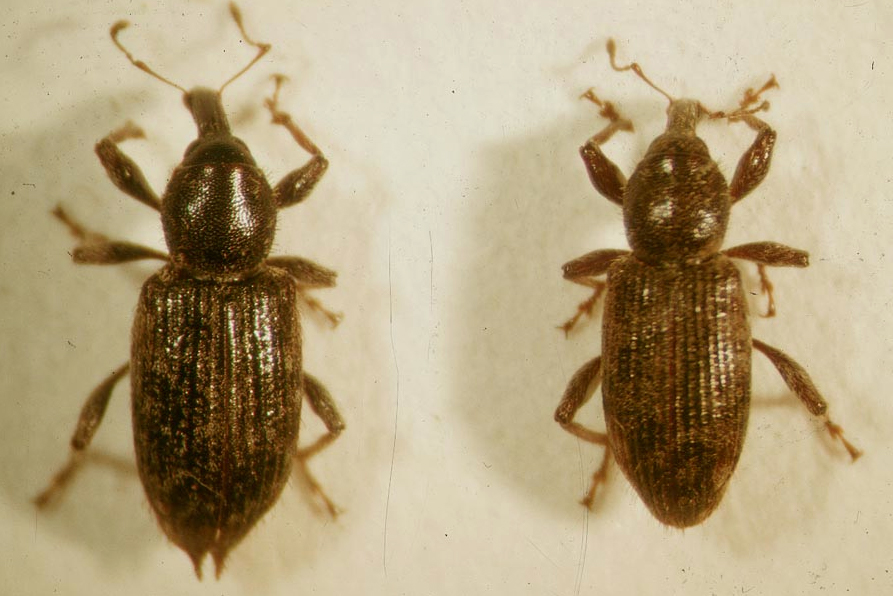
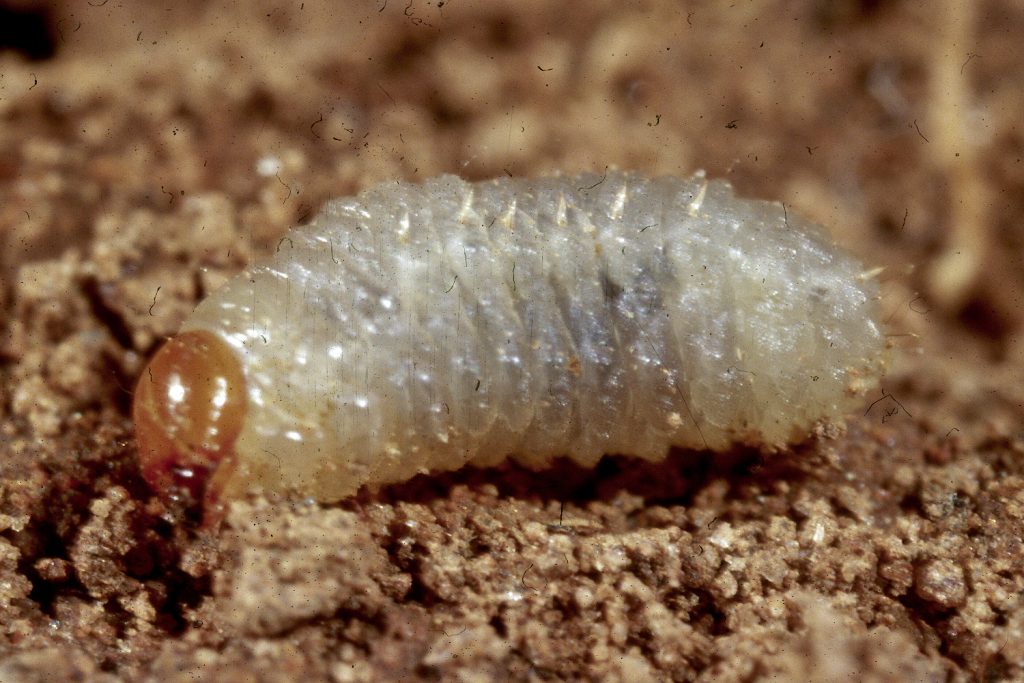
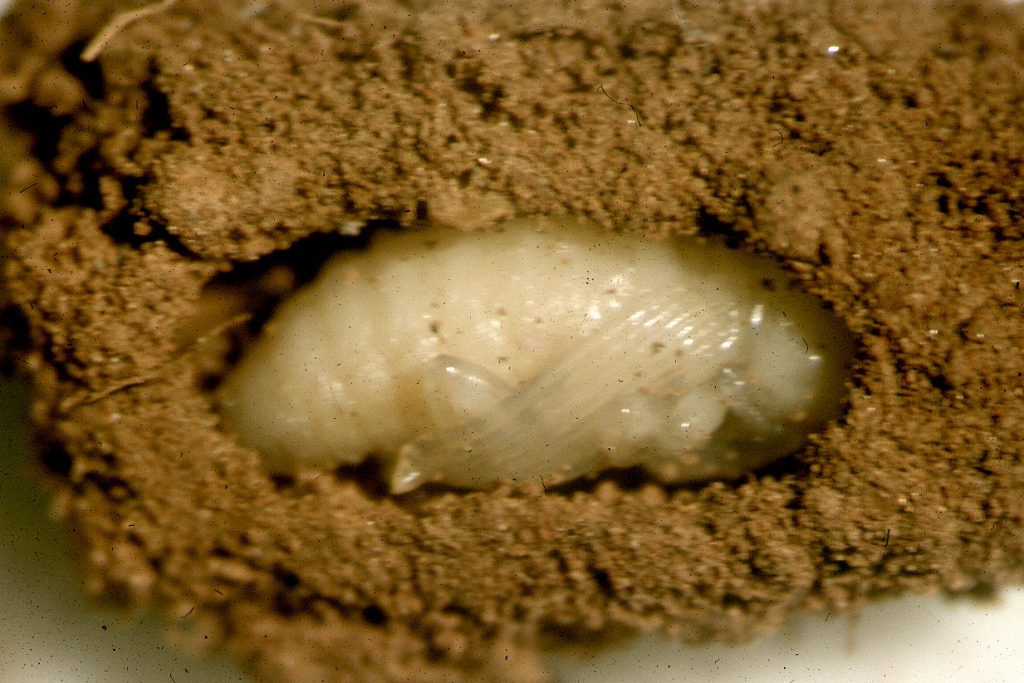
Lifecycle Top
Spinetailed weevils have one generation per year. Sexually immature adults emerge from the soil in November. Autumn rain stimulates summer sheltering adults to become active and mate. Because adults are flightless they lay eggs in the soil close to where they emerge. Eggs hatch after 2-3 weeks in autumn after the opening rains. Larvae pass through five instar stages and pupate in spring and adults emerge during spring through to early summer.
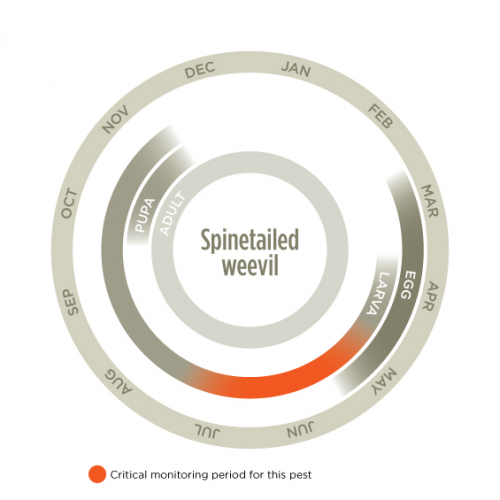
Generally spinetailed weevil requires 3 or more consecutive years in grass dominant pastures prior to cereal crops to reach damaging numbers
Behaviour Top
After emergence in November, adults feed on early summer annual weeds before sheltering under stones or soil clods during summer. Rains in autumn cause resumption of feeding and mating. After hatching, larvae feed on germinating grasses or cereals and can also feed on soil organic matter. Larvae feed during winter and spring.
Similar to Top
Other weevils, especially spotted vegetable weevil.
The larvae of spinetailed weevil can only be distinguished from spotted vegetable weevil by examining the spiracles under a microscope.
Crops attacked Top
Cereals and pasture grasses.
Damage Top
Larvae attack cereals at the seed, seedling and tillering stages. They may feed underground on germinating seeds just after sowing, or bore into underground stems of seedlings, causing them to wither and die, or bore into the base of tillers. Seed or seedling death results in thinned or bare patches in crops. Damage is most severe in cereal crops sown after 3 or more years of grass dominant pastures.
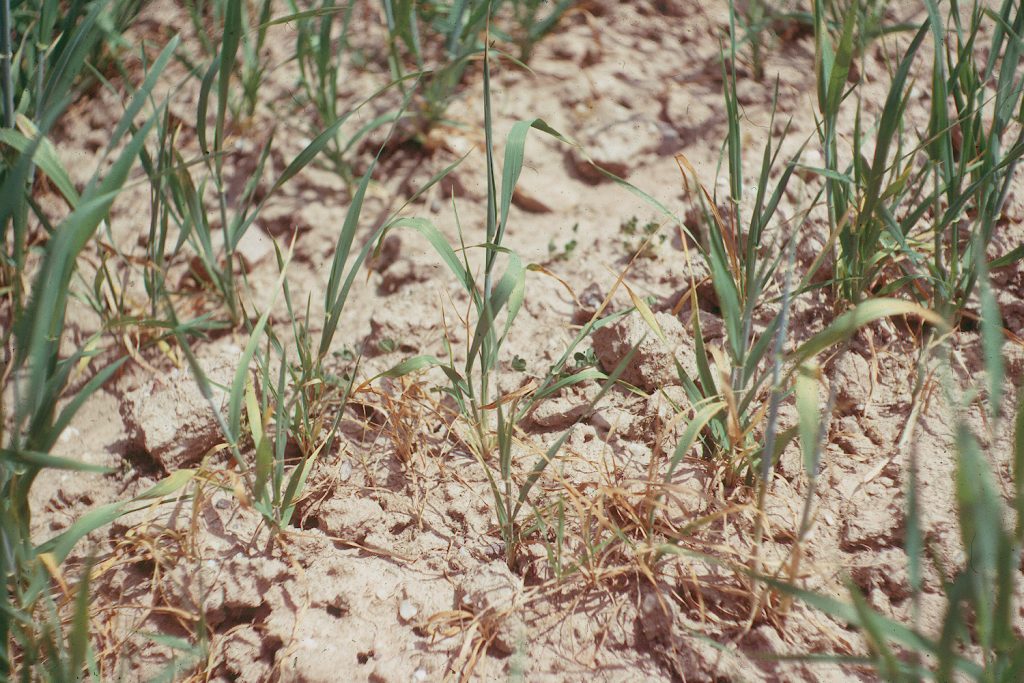
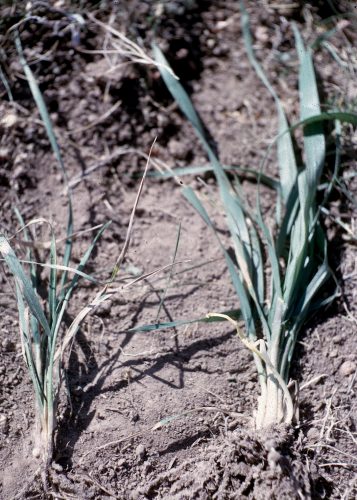
Monitor Top
Cereals are most susceptible when sown into paddocks that have not been cropped for a number of years. Inspect these paddocks prior to sowing and look for poor emergence and bare patches after sowing in late autumn/early winter. If poor establishment has occurred, search for the presence of larvae by digging the soil. Search an area of 30 cm x 30 cm square and to a depth of 10 cm. Repeat this 5 to 10 times across the paddock.
Economic thresholds Top
Treatment should be considered if there are 10 or more larvae per square metre (Bailey 2007).
Management options Top
Biological
Soil dwelling pathogens such as the fungus Beauvaria may kill some larvae. There are no known predators that effectively control spinetailed weevils.
Avoid sowing cereals into long-term pasture paddocks.
Cultural
Crop rotations that include only one or, at the most, two years of pasture between cereal crops will reduce pest occurrence. Use higher sowing rates to compensate for larvae attack on seed (see chemical option for more detail). Control alternate hosts, including grass weeds and capeweed, during late spring, summer and early autumn to reduce the survival rate of adults and minimise egg numbers.
Chemical
There are no foliar insecticides registered against this species, however chlorpyrifos is registered as an insecticide seed dressing against the spinetailed weevil. Seed treatments can reduce the feeding damage to cereal seedlings however there may still be some plant death before the larvae are killed. If there are more than 100 larvae per m2, use a sowing rate of 95 kg/ha to compensate for the damage caused before the larvae are killed.
Control of larvae can only be achieved with a seed dressing
Acknowledgements Top
This article was compiled by Paul Umina (cesar) and Bill Kimber (SARDI).
References/Further Reading Top
Allen PG. 1973. Biology of Desiantha caudate Pascoe (Coleoptera: Curculionidae) in South Australia. Journal of the Australian Entomological Society 12: 201-206.
Bailey PT. 2007. Pests of field crops and pastures: Identification and Control. CSIRO Publishing, Melbourne, Australia.
Grierson IT and Allen PG (1977) Cereal curculio (Desiantha caudata) damage to wheat following different pre-sowing tillage programmes. Australian Journal of Experimental Agriculture and Animal Husbandry 17: 466 – 46.
Henry K, Bellati J, Umina P and Wurst M. 2008. Crop Insects: the Ute Guide Southern Grain Belt Edition. Government of South Australia PIRSA and GRDC.
| Date | Version | Author(s) | Reviewed by |
|---|---|---|---|
| January 2015 | 1.0 | Paul Umina (cesar) and Bill Kimber (SARDI) | Garry McDonald (cesar) |
What are PestNotes?
PestNotes are information sheets developed through a collaboration between Cesar Australia and the South Australian Research and Development Institute (SARDI). Copyright: © All material published in PestNotes is copyright protected by Cesar Australia and SARDI and may not be reproduced in any form without written permission from both agencies.
Disclaimer
The material provided in PestNotes is based on the best available information at the time of publishing. No person should act on the basis of the contents of this publication without first obtaining independent, professional advice. PestNotes may identify products by proprietary or trade names to help readers identify particular products. We do not endorse or recommend the products of any manufacturer referred to. Other products may perform as well as or better than those specifically referred to. Cesar Australia and PIRSA will not be liable for any loss, damage, cost or expense incurred or arising by reason of any person using or relying on the information in this publication. Any research with unregistered pesticides or products referred to in PestNotes does not constitute a recommendation for that particular use.

